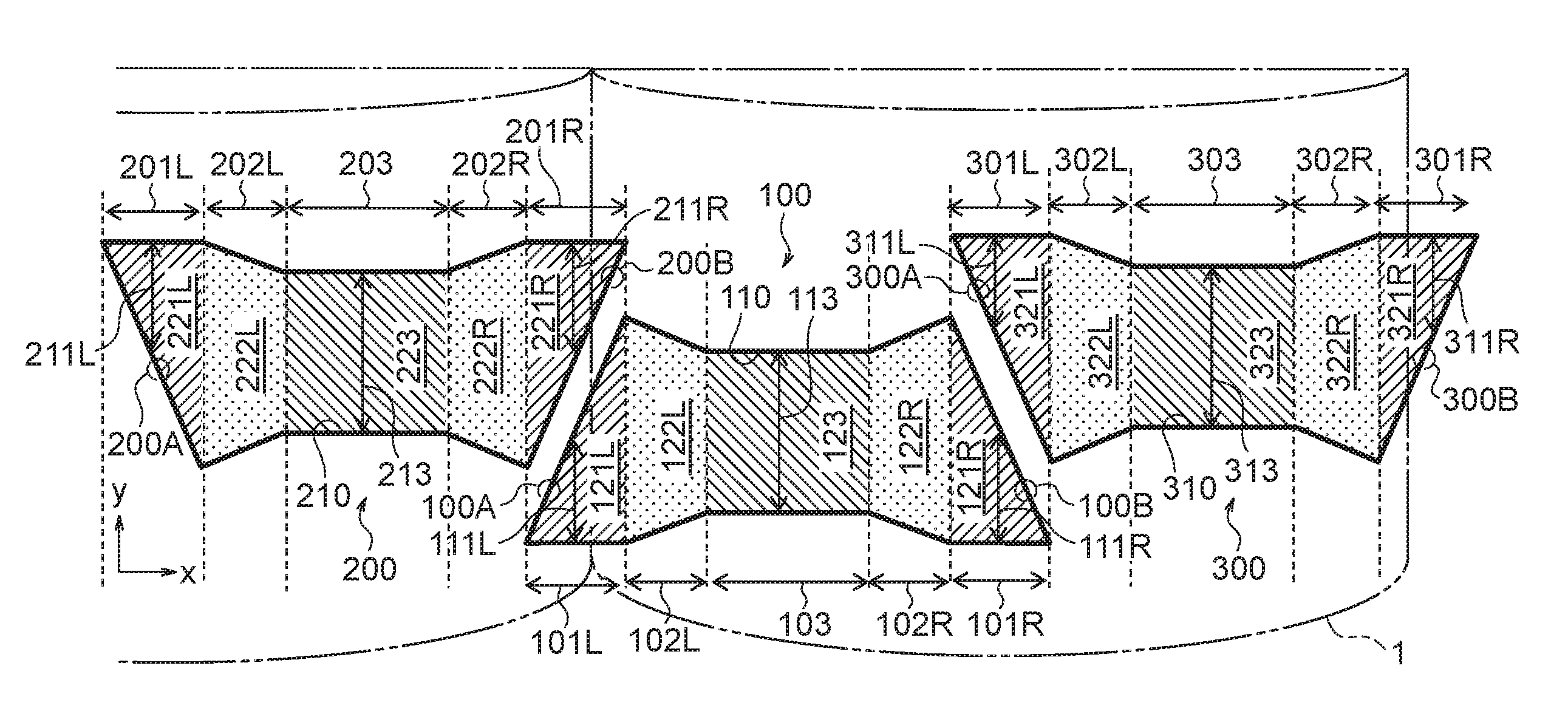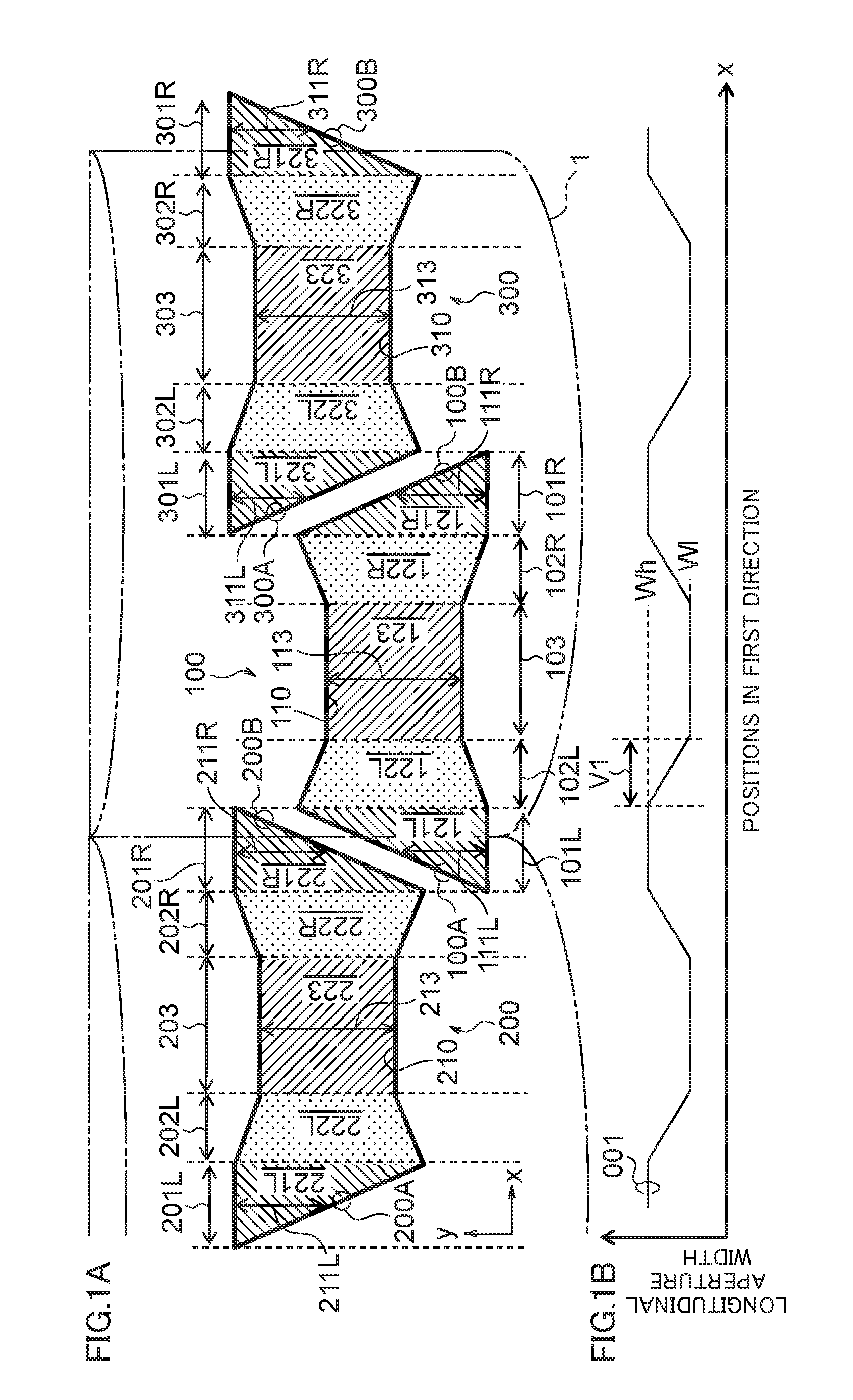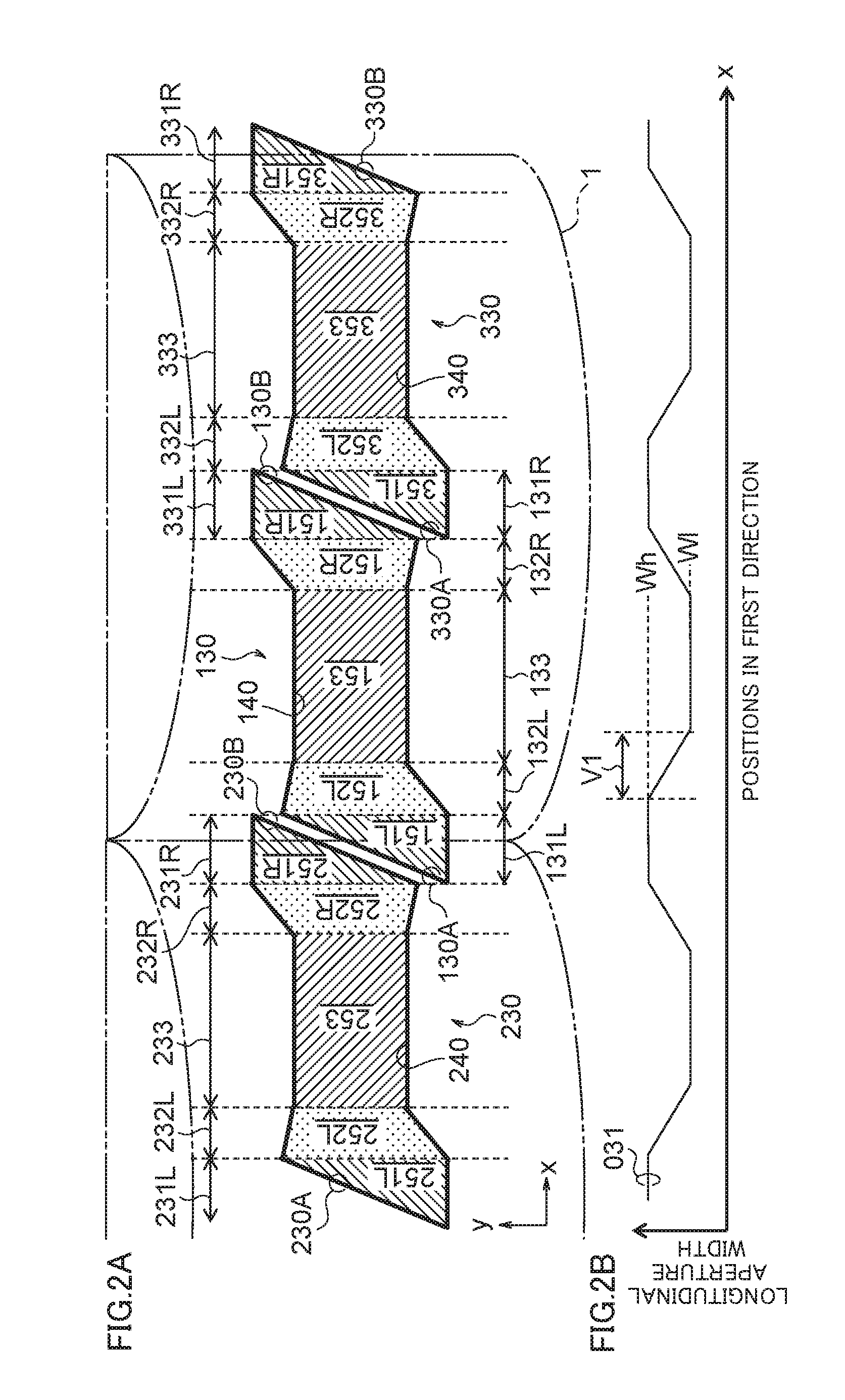Stereoscopic display device
a display device and stereoscopic technology, applied in the direction of instruments, color television details, electrical devices, etc., can solve the problems of insufficient visibility of 3d moiré, difficulty in eliminating the processing variation of about several m as the shape precision, and the observer's sense of discomfor
- Summary
- Abstract
- Description
- Claims
- Application Information
AI Technical Summary
Benefits of technology
Problems solved by technology
Method used
Image
Examples
first exemplary embodiment
Operations and Effects
[0100]Examples 1 to 3 described above employ the ideal sub-pixel structures. A case where a rounded corner is generated in the aperture part in Example 1 will be described by referring to FIG. 4A. In FIG. 4A, shown are the aperture parts 110, 210 (broken lines) of the ideal sub-pixels shown in FIG. 1A and the aperture parts 110a, 210a of the sub-pixels 100a, 200a with the rounded corners. As in the case of the ideal aperture part 110 (210), there are three sections, i.e., the aperture width constant section 103a (203a), the aperture width fluctuating section 102aL (202aR), and the overlapping section 101aL (201aR) in the aperture part 110a (210a).
[0101]Compared to the ideal aperture part 110 (210), the overlapping section 101aL (201aR) in the aperture part 110a (210a) is reduced due to rounding of the corner and, at the same time, the aperture width fluctuating section 102aL (202aR) is expanded for that. FIG. 4B shows the state where the total value of the long...
second exemplary embodiment
[0113]A second exemplary embodiment will be described by referring to FIG. 8A. Sub-pixels 600, 700, and 800 of the second exemplary embodiment are arranged along the first direction x. The unit lenses of the lens 1 as the light-ray control modules are disposed at the positions corresponding to a pair of sub-pixels 600, 800, and arranged repeatedly along the first direction x.
[0114]The aperture width constant region existed in the first exemplary embodiment does not exist in the aperture part 610 (710, 810) of the sub-pixel 600 (700, 800) of the second exemplary embodiment. There are two overlapping regions 621L (721L, 821L) and 621R (721R, 821R) in the aperture part 610 (710, 810). Further, there is an aperture width fluctuating region existing between the two overlapping regions. The aperture width fluctuating region is divided into two aperture width fluctuating regions 622L (722L, 822L) and 622R (722R, 822R).
[0115]That is, the aperture part 610 includes: the overlapping region 62...
third exemplary embodiment
Summary
[0126]Note here that the distance between the maximum value and the minimum value of the aperture position in the second direction of a single sub-pixel is defined as an optical longitudinal aperture section. That is, the maximum value of the difference between the position at one end of the aperture part in the second direction and the position at the other end of the aperture part in the second direction is defined as “longitudinal aperture section”. In the aperture part 901UL of Comparative Example shown in FIG. 10A, the difference between the position at one end 904 in the second direction y and the position at the other end 905 in the second direction y is the longitudinal aperture section 903. In the aperture part 911UL of Example 1 shown in FIG. 11A, the difference between the position at one end 914 in the second direction y and the position at the other end 915 in the second direction y is the longitudinal aperture section 913. In the aperture part 921UL of Example 2...
PUM
 Login to View More
Login to View More Abstract
Description
Claims
Application Information
 Login to View More
Login to View More - R&D
- Intellectual Property
- Life Sciences
- Materials
- Tech Scout
- Unparalleled Data Quality
- Higher Quality Content
- 60% Fewer Hallucinations
Browse by: Latest US Patents, China's latest patents, Technical Efficacy Thesaurus, Application Domain, Technology Topic, Popular Technical Reports.
© 2025 PatSnap. All rights reserved.Legal|Privacy policy|Modern Slavery Act Transparency Statement|Sitemap|About US| Contact US: help@patsnap.com



